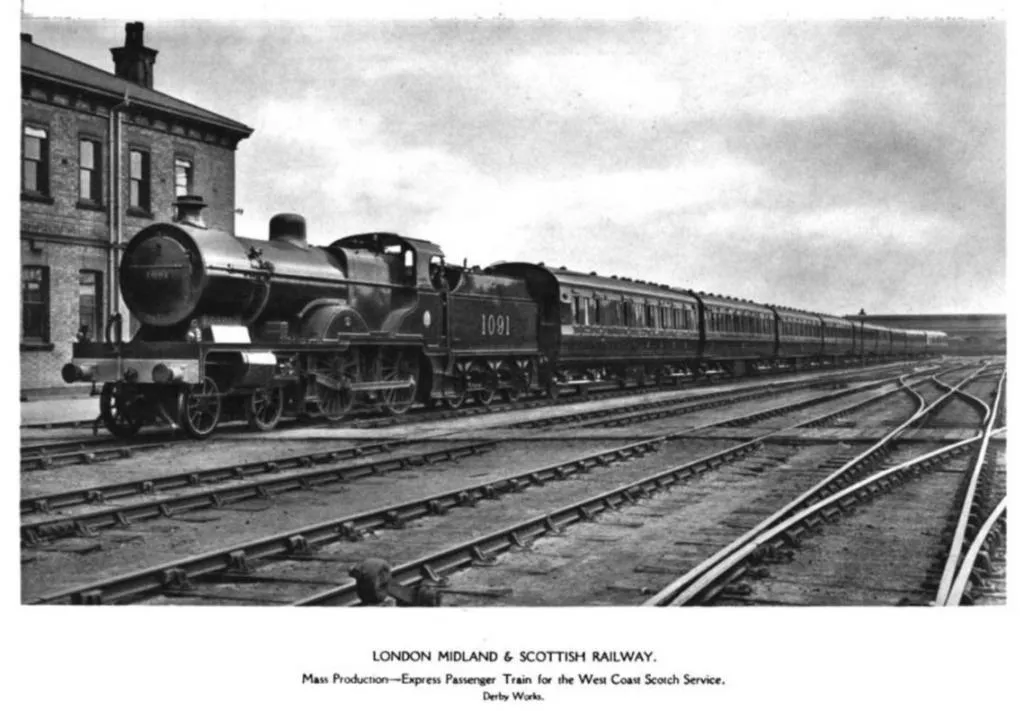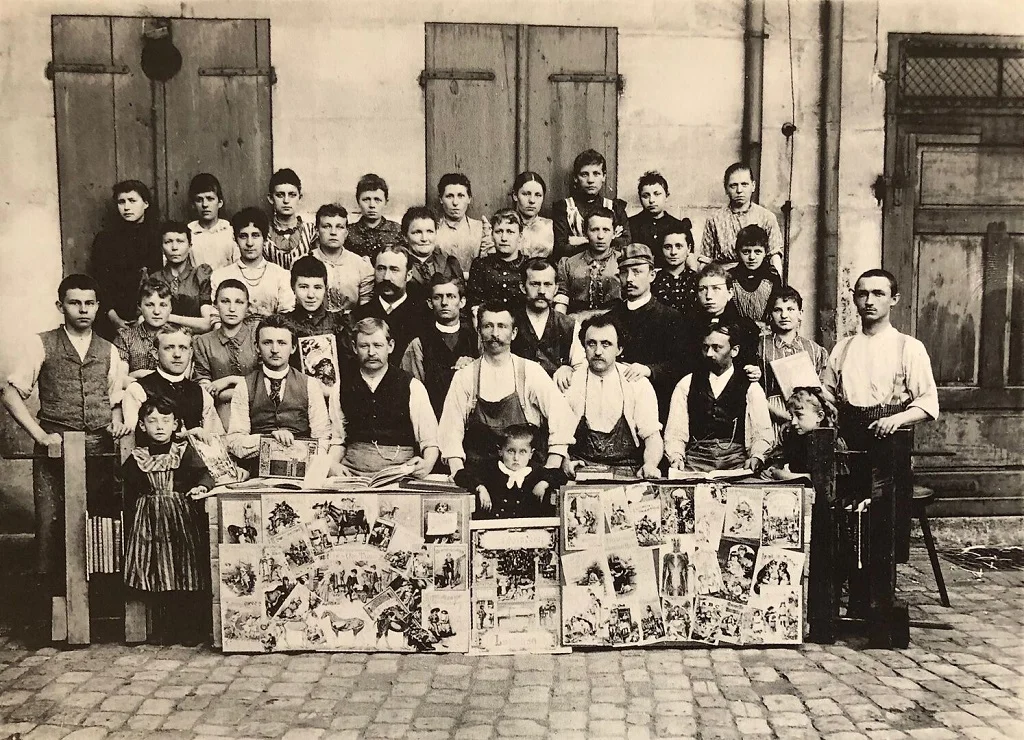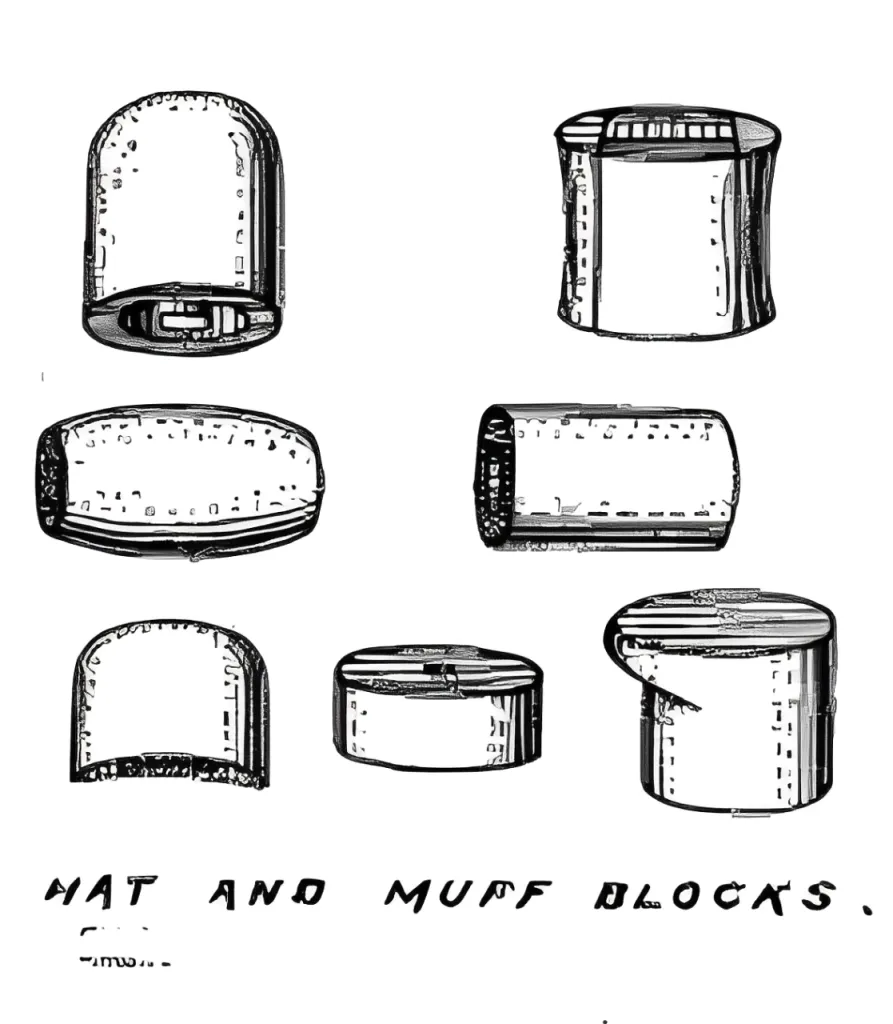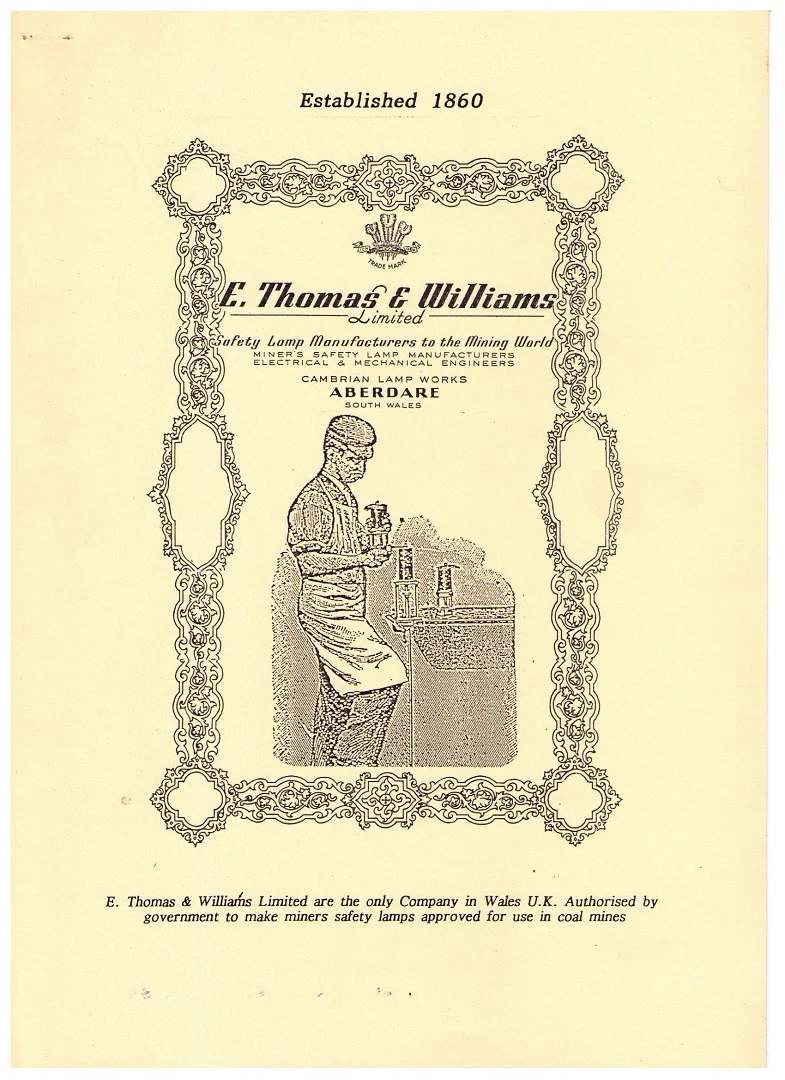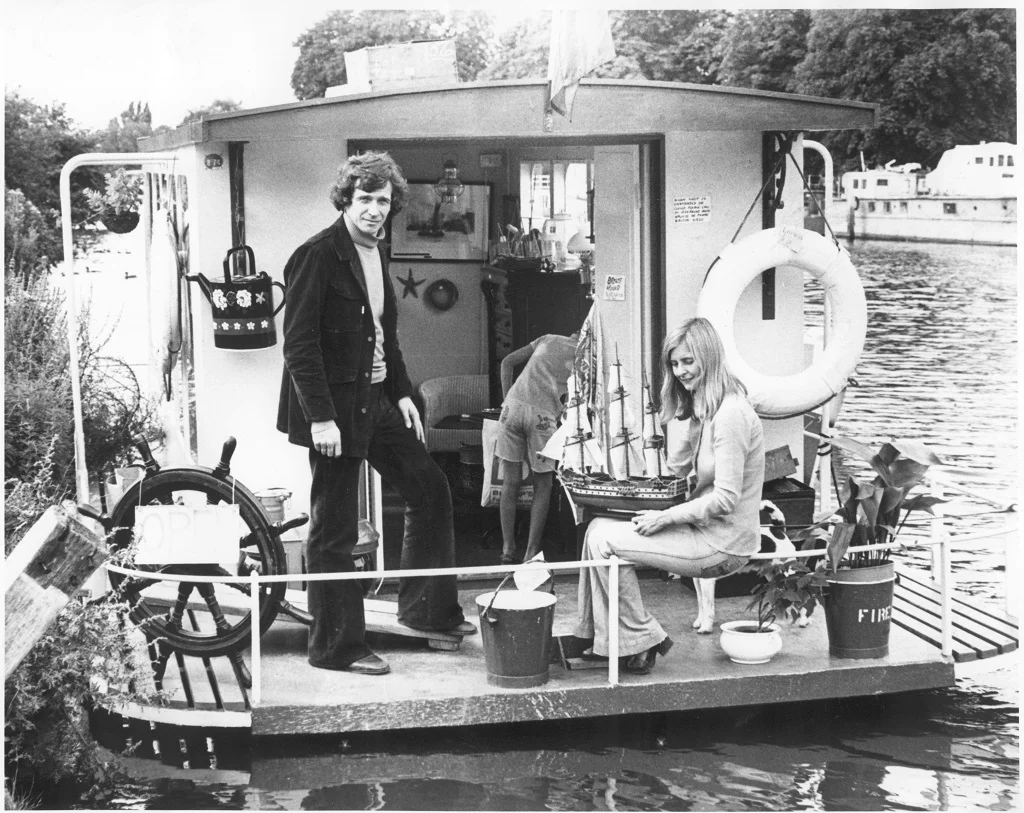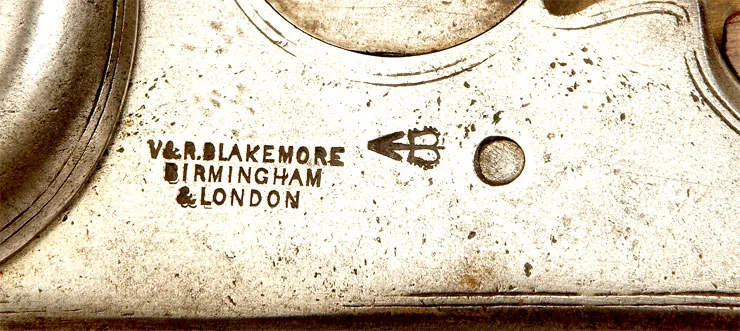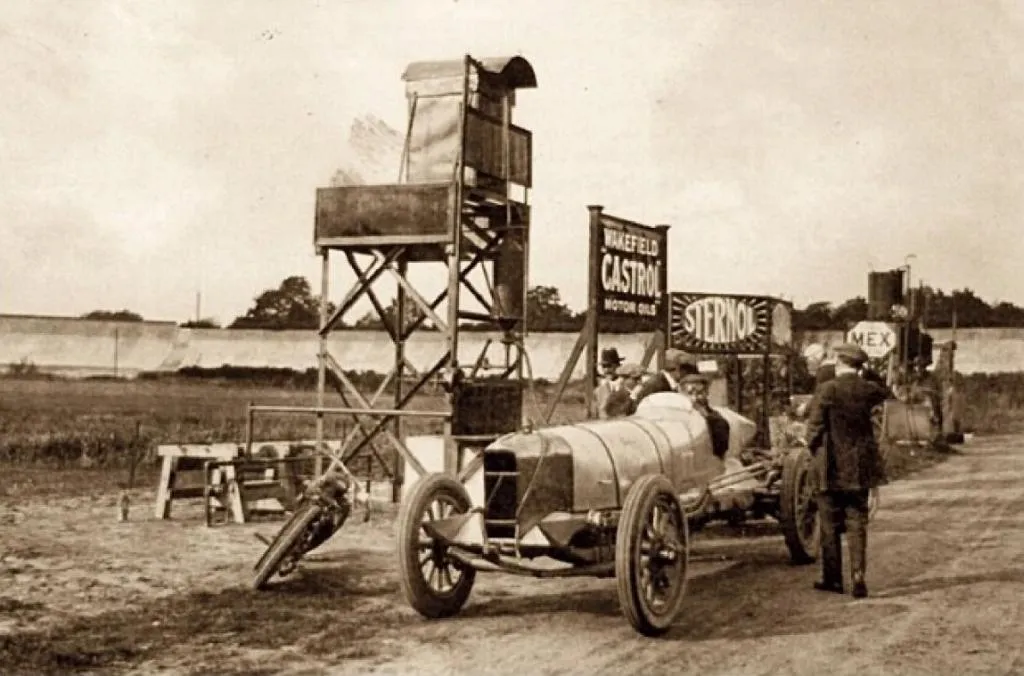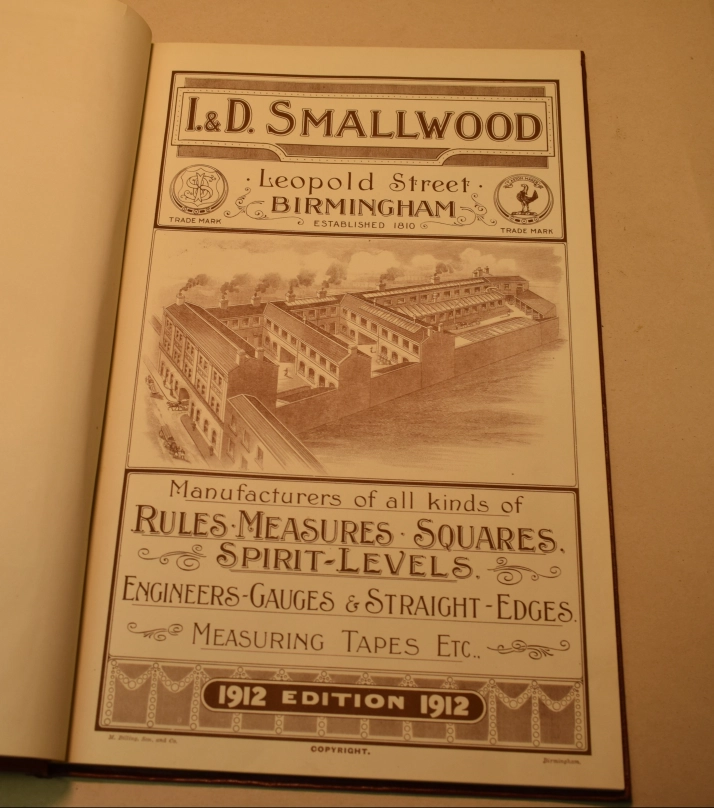William Ford Stanley and His Inventions
Contents
A Portrait of InnovationA Grand FarewellThe Revolutionary TheodoliteAneroid Barometers: Measuring Heights with PrecisionThe Box SextantStanley’s Patent Electric DiscA Treatise on Drawing InstrumentsThe Extra Massive Studio CameraThe New Model Level: Precision in ConstructionThe Ring Plummet: An Engineer’s Essential ToolStanley’s Influence in Advertising and the Legacy of W. F. Stanley & Co. Ltd.A Lasting LegacyDiscover the life and inventions of William Ford Stanley, a pioneer in precision engineering, whose groundbreaking instruments revolutionized surveying, drawing, and scientific exploration.
Discover William Ford Stanley’s revolutionary instruments, from theodolites and barometers to sextants and photographic equipment, and explore the legacy of W. F. Stanley & Co. Ltd. in science and engineering.
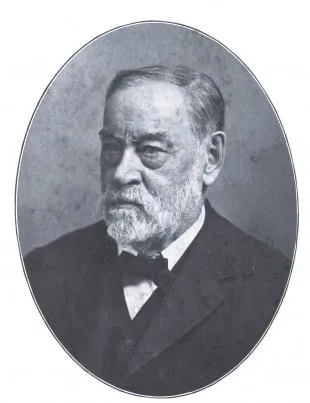
Source: Google Books
William Ford Robinson Stanley (1829–1909) was not just an inventor but a visionary in precision engineering. With 78 patents under his name, he transformed the world of surveying, drawing, and scientific instruments. His contributions helped shape how engineers, surveyors, and explorers navigated and documented the world.
Born in Buntingford, Hertfordshire, Stanley was a self-taught engineer who built his career from the ground up. His company, W.F. Stanley & Co., Ltd., became one of the most respected manufacturers of mathematical and scientific instruments in Britain, supplying tools to the government, industries, and even the colonies. But beyond his technical genius, Stanley had a passion for education and social causes, funding schools and charitable initiatives.
This article explores some of his most notable inventions, accompanied by fascinating historical images from his time.
A Portrait of Innovation
Stanley’s influence was felt far beyond his factory floor. His instruments were used in major engineering projects and explorations worldwide. His designs were not only practical but also highly durable, making them sought-after even today by collectors of antique scientific instruments.
A Grand Farewell
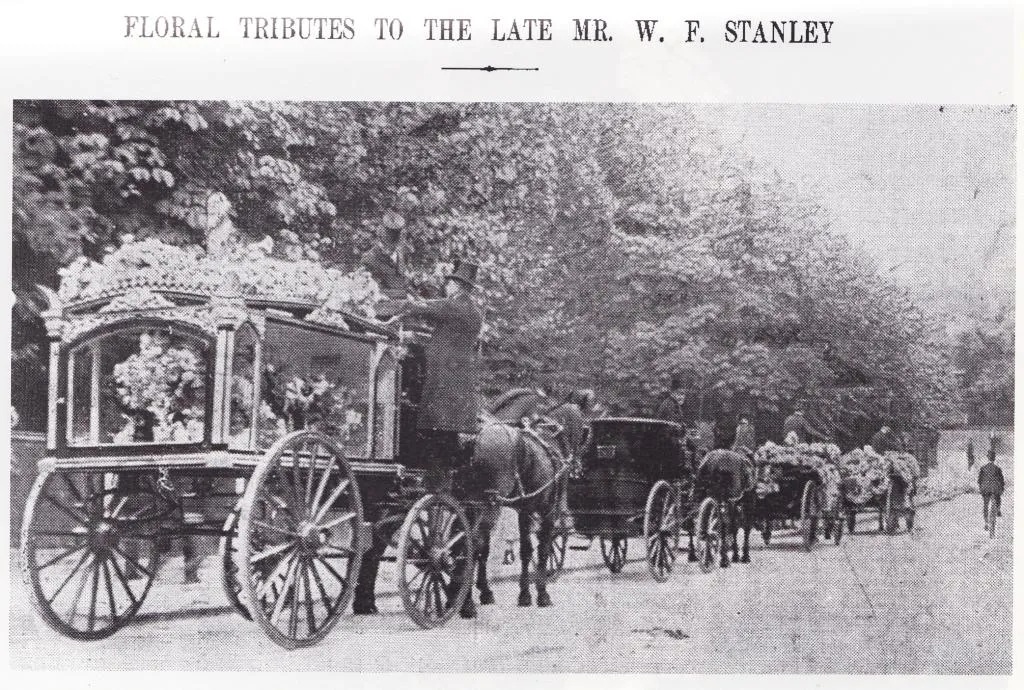
Source: By Not known - Scan from the book "The Story of William Stanley - A Self-made Man" by Eloïse Akpan - original image was created in 1909., PD-US, https://en.wikipedia.org/w/index.php?curid=29003734
When Stanley passed away in 1909, his contributions were widely recognized, and his funeral was a grand affair. His legacy, however, lived on through the instruments that bore his name and the advancements they enabled.
The Revolutionary Theodolite
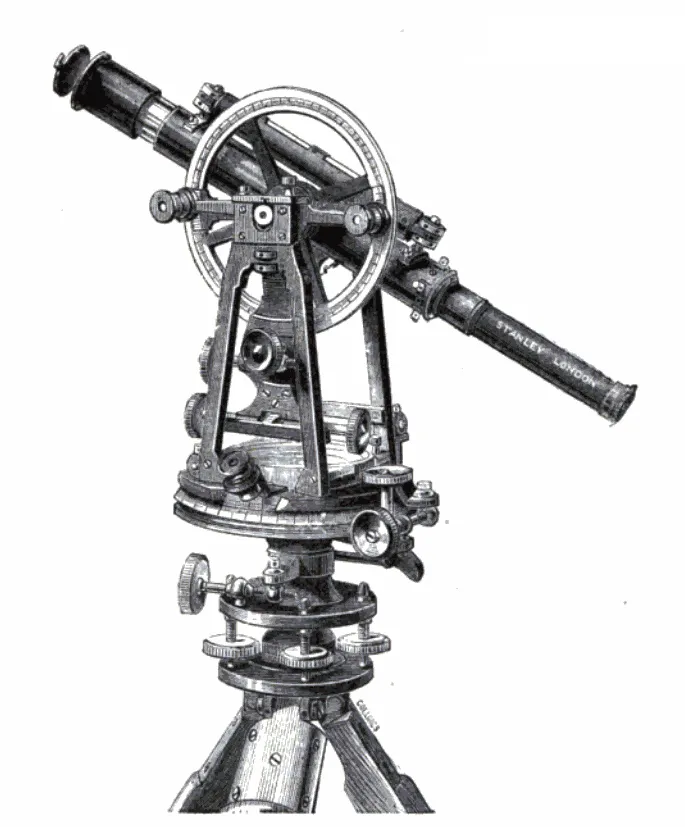
Source: Google Books
One of Stanley’s most important contributions was his refinement of the theodolite. By reducing the number of parts from 226 to fewer than half, he made the instrument lighter, more affordable, and easier to use—while also improving its accuracy. His theodolites were used worldwide in land surveying, helping map regions with unprecedented precision.
Aneroid Barometers: Measuring Heights with Precision
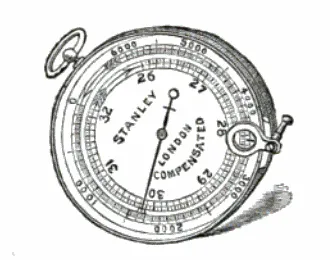
Source: Google Books
Stanley’s aneroid barometers were a breakthrough in altitude measurement. Lightweight and portable, these instruments allowed engineers and explorers to accurately measure elevation without the need for cumbersome liquid-based devices.
The Box Sextant
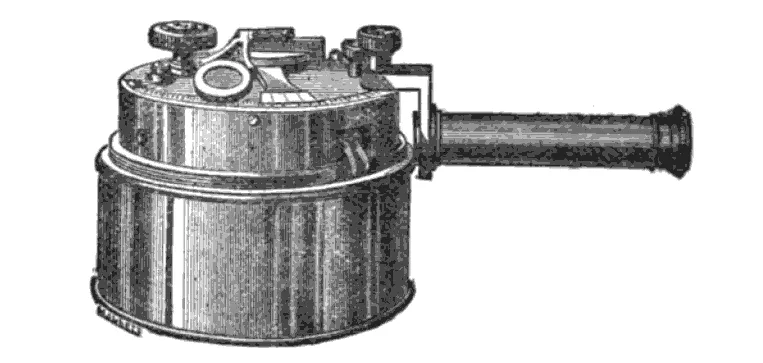
Source: Google Books
Stanley’s box sextant was a valuable tool for surveyors needing to measure angles quickly. Compact and efficient, it became an essential piece of equipment for engineers working on large-scale mapping projects.
Stanley’s Patent Electric Disc
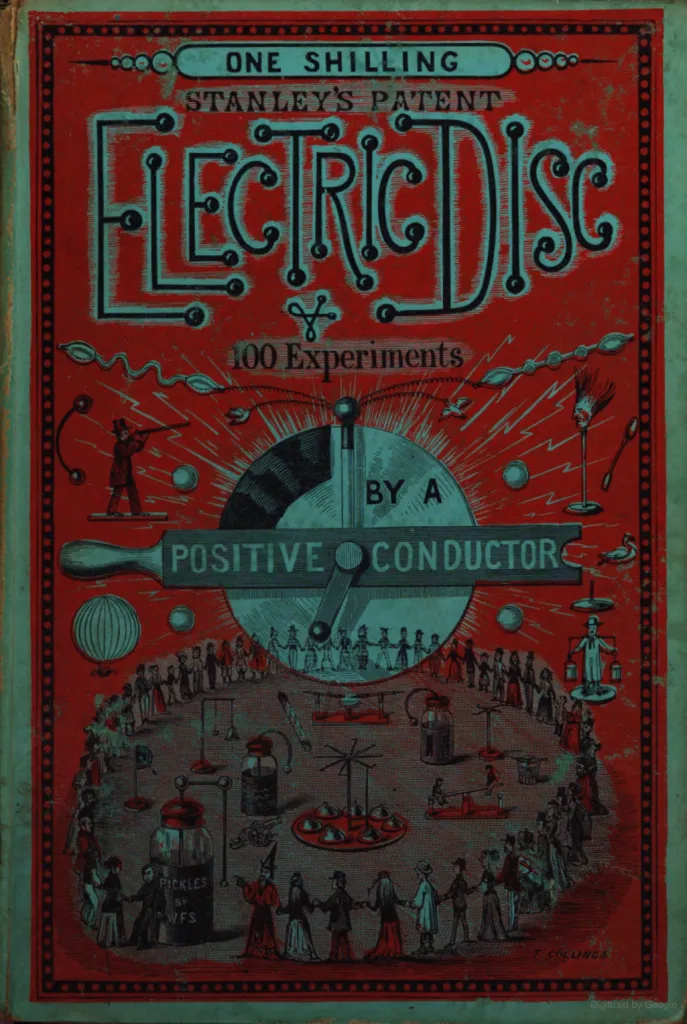
Source: Google Books
Stanley didn’t just create instruments—he also designed educational tools. His Electric Disc allowed users to perform over 100 electrical experiments, making science more accessible to students and enthusiasts.
A Treatise on Drawing Instruments
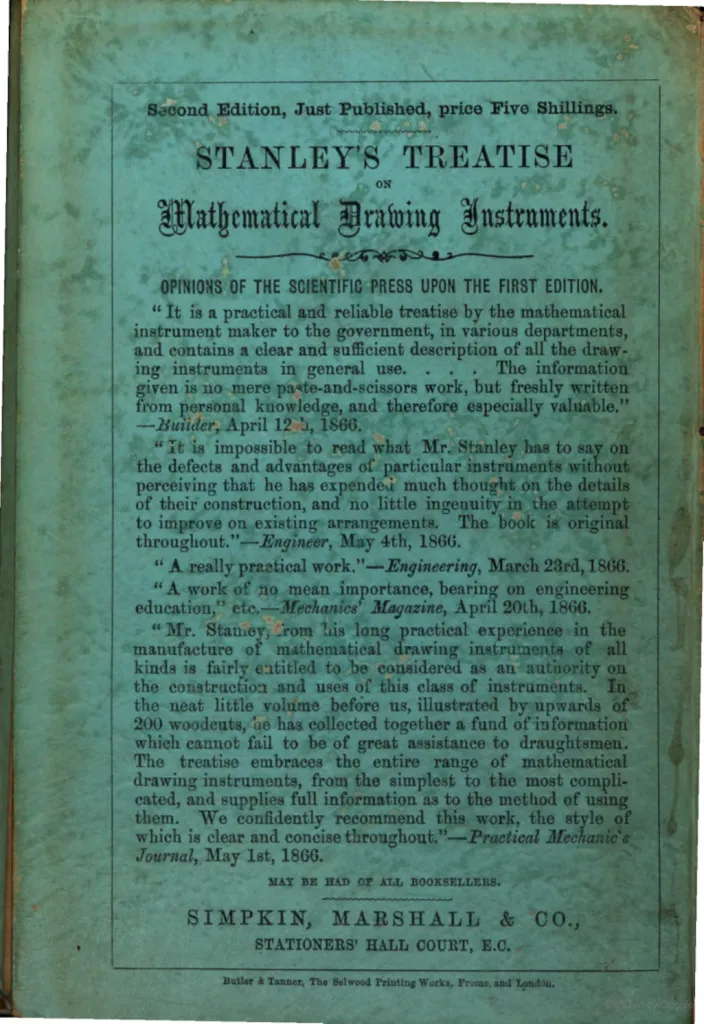
Source: Google Books
Beyond his inventions, Stanley was also an author. His treatises on mathematical drawing instruments became standard references for engineers and students, offering detailed explanations on the use and design of precision tools.
The Extra Massive Studio Camera
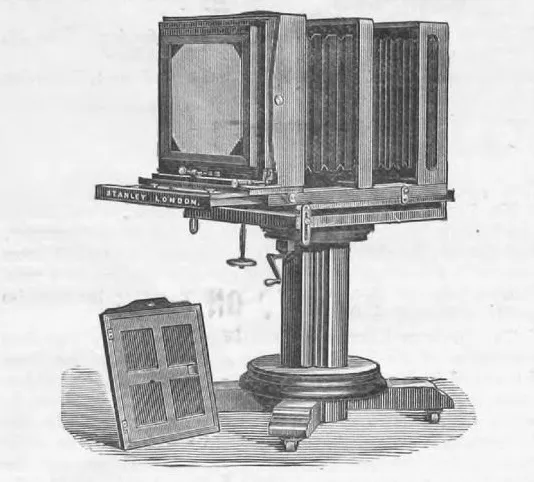
Source: Google Books
While best known for scientific instruments, Stanley also made photographic equipment. His extra massive studio camera was an impressive creation, providing photographers with a stable and high-quality tool for capturing detailed images.
The New Model Level: Precision in Construction
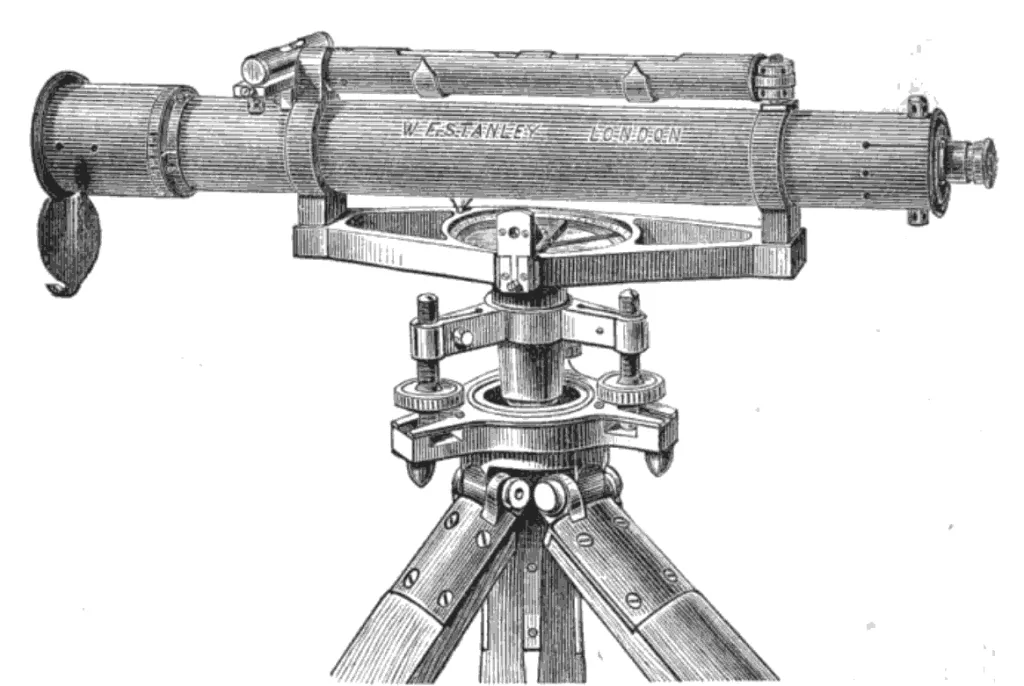
Source: Google Books
Stanley’s New Model Level was designed with improved construction, combining rigidity and lightweight design. It became a staple in the construction and engineering industries, helping to ensure accurate leveling on large-scale projects.
The Ring Plummet: An Engineer’s Essential Tool
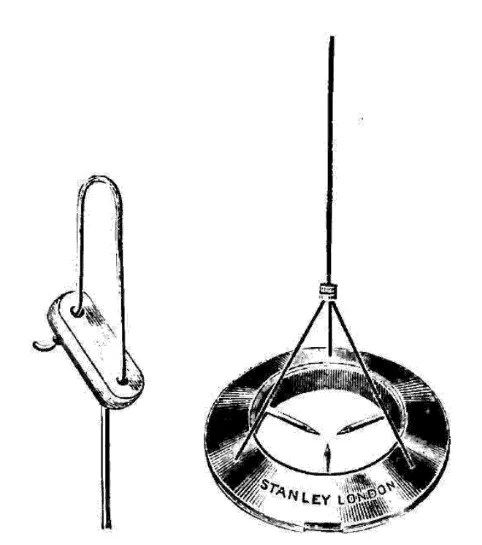
Source: Google Books
Surveying required absolute precision, and Stanley’s ring plummet helped engineers make accurate vertical measurements. This small but crucial instrument demonstrated his attention to even the finest details.
Stanley’s Influence in Advertising and the Legacy of W. F. Stanley & Co. Ltd.
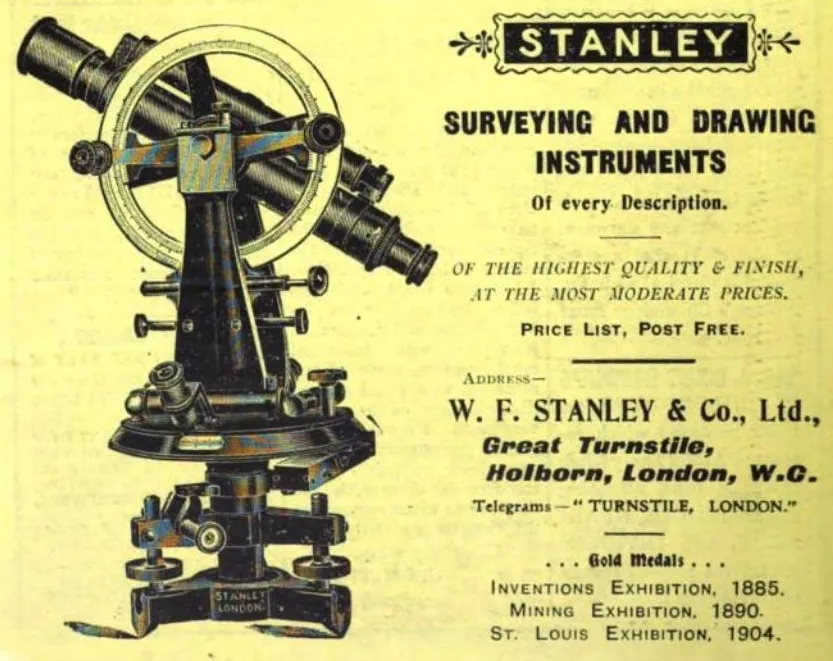
Source: Google Books
William Ford Stanley was not just an inventor—he was also a savvy businessman. In 1853, he founded W. F. Stanley & Co. Ltd., a company that would go on to dominate the market for precision instruments for over a century. Initially, the company specialized in mathematical, scientific, and drawing instruments, but over time, it expanded its catalog to include theodolites, sextants, barometers, and even photographic equipment.
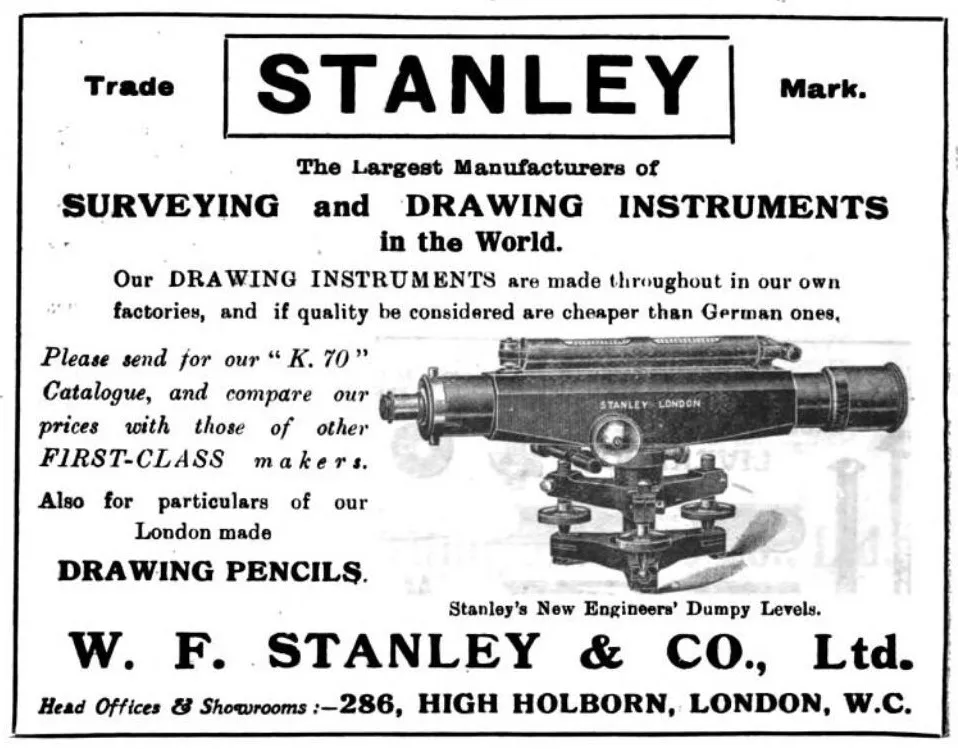
Source: Google Books
By the late 19th and early 20th centuries, Stanley’s company had become one of the leading manufacturers of surveying and engineering tools in Britain, supplying instruments to government agencies, colonial administrations, and military forces. His advertisements proudly emphasized that his products were manufactured in-house, ensuring both superior quality and competitive pricing—often positioned as a better alternative to German-made instruments.
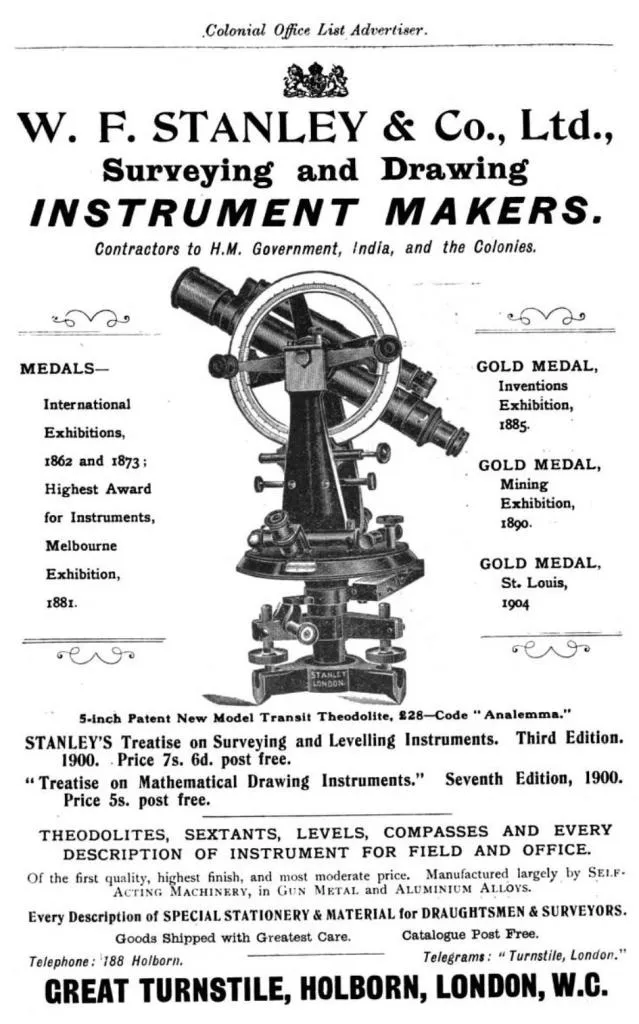
Source: Google Books
The company's reputation was further solidified when it won multiple gold medals at international exhibitions, including the Inventions Exhibition (1885), Mining Exhibition (1890), and St. Louis Exhibition (1904). Stanley’s branding and marketing strategies helped cement his company's name in the world of engineering and exploration, and even after his passing in 1909, W. F. Stanley & Co. Ltd. continued to produce high-quality instruments well into the 20th century.
Today, antique Stanley instruments are highly collectible, valued not only for their precision but also for their historical significance.
A Lasting Legacy
William Ford Stanley’s legacy is engraved in history. His precision instruments paved the way for modern surveying, engineering, and scientific advancements. Today, his tools remain highly collectible, treasured by antique enthusiasts and historians alike.
Whether it was through revolutionizing theodolites, crafting elegant drawing instruments, or pioneering educational tools, Stanley’s impact on the world was profound. His ability to blend scientific accuracy with practical design ensures that his name continues to be synonymous with excellence in engineering and invention.
william-ford-robinson-stanley-smallstanley-ad-from-india-office-list-advertiser-smallfuneral-procession-of-william-ford-stanley-smallextra-massive-studio-camera-and-stand-with-universal-motions-stanley-london-smallbook-cover-electric-disk-and-experiments-by-a-positive-conductor-william-stanley-patentee-1869-smallaneroid-mountain-barometer-stanley-london-smallShare this article






